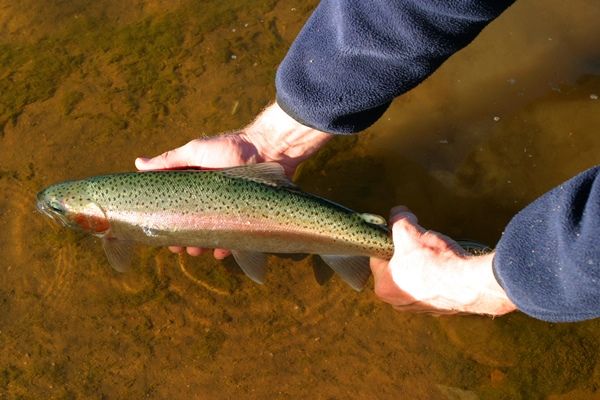Latest News
FISH’N’TIP 0779 for the week of 20/4/2016
Monday, 18 April 2016
Trout Fishing Essentials
With the trout river season on the mainland having just a few weeks left before closing, you may be one of the many fisherman eager to drop one last line to land one of these fish before it does. But note also many lakes and dams are open all year round, so river or lake check the rules in your state to see when you can fish and the other rules involved and then your ready to catch a trout. And who wouldn’t want to catch a trout? They fight well, taste great and are high in vitamin B. But before you head out, have a read and we'll cover some key points to help you land one!
Where are the fish located?
Trout like clean, flowing, and cool water. Depending on the water temperature, underwater structure, surface temperature, and sun exposure, this type of fish can be found in both deep and shallow water. In a deep lake, trout can normally be located at depths between 1 an 8 metres. They are rarely found below 11 metres. During spring months, trout tend to swim in shallow water along the shoreline. When summer approaches and temperatures soar, trout cruise below the thermoline, which is where the cold and warm water blend together. This is commonly at depths below 5.5 metres. When the sun is high, they seek water further from the shore, but at early morning hours, they come closer and swim at depths approximately 1.5 metres below sea level.
Where possible, trout prefer cover, especially in streams and rivers. This means they like overhanging vegetation, stream debris, banks, and rocks, which provide hiding spaces. These are the key places to cast your bait lure and fly.
What gear should you bring? On sunny days, you will want a good set of polarized sunglasses and a hat. These glasses cut the water's glare allowing you to spot fish and your lures. A hat provides shade and keeps glare off your glasses. Waders will be useful as well. Since they allow you to enter the water these boots help you cover the river as efficiently as possible so that you can access spaces where fish like to hide.
Trout feeding Habits
Trout are opportunistic feeders and are most active in the early morning and early evening. Since these fish enjoy cool water, they tend to enter deeper levels when the outside temperatures rise. They eat a variety of insects but prefer the "new hatch." When the seasons change, trout are drawn to the latest hatching insects. Experienced anglers like to fish in the "feeding lane." Trout enjoy swimming in currents where food is prevalent. Since insects often fall into the water around overhanging trees and similar areas, these locations are great sources of food. Trout usually hold their position in these places so that the current brings them dinner. This "feeding lane" is sure to be your top spot to fill your basket.
Thanks Gaz, some good tips for beginners in there, hope it helps out readers keen to get into this wonderful part of fishing. If you to learn lots more about fishing for trout in Australia, check out our specialized ‘TROUT’ dvd and the trout chapters of our book, both available at www.fishingaustralia.tv/shop



